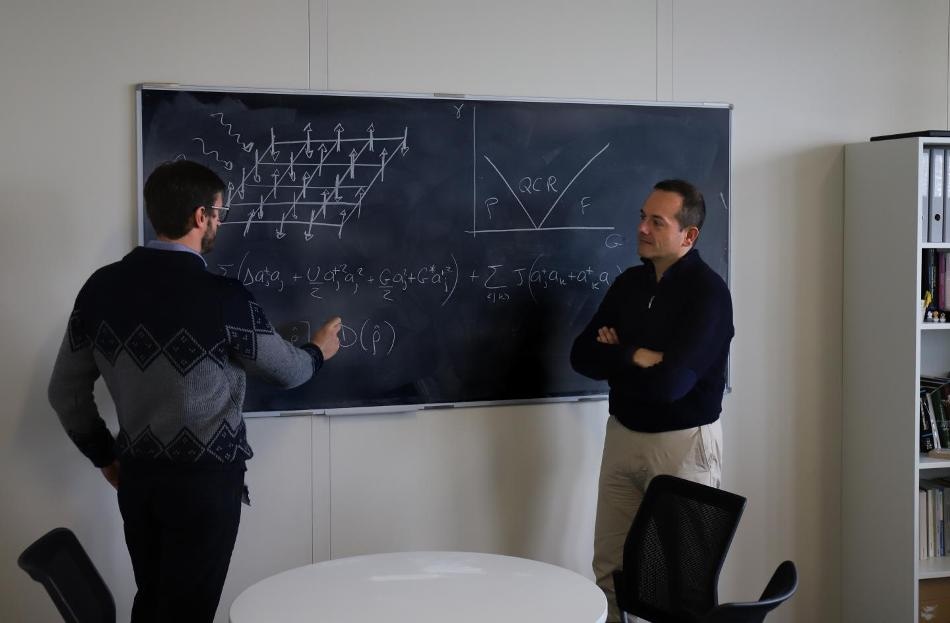Mar 22 2019
Upon subjecting systems formed of multiple interacting particles to the quantum mechanical laws, they can exhibit behavior so complex that its quantitative description disobeys the potentials of the most robust computers in the world.
 Riccardo Rota and Vincenzo Savona, the two EPFL physicists leading the study, working on the design of their quantum simulator. (Image credit: R. Ravasio/EPFL)
Riccardo Rota and Vincenzo Savona, the two EPFL physicists leading the study, working on the design of their quantum simulator. (Image credit: R. Ravasio/EPFL)
In the year 1981, Richard Feynman, an eminent physicist, proposed that such complex behavior can be simulated with the help of an artificial device regulated by the very same quantum laws—a so-called “quantum simulator.”
Magnets placed at extremely low temperatures constitute an example of a complex quantum system. Near absolute zero temperatures (−273.15 °C), magnetic materials may experience a so-called “quantum phase transition.” Similar to a traditional phase transition (e.g. evaporation of water into steam, or melting of ice into water), the system still shifts between two states, apart from the one close to the transition point, the system manifests quantum entanglement—the most exclusive feature proposed by quantum mechanics. For experimental physicists, it is an extremely difficult task to analyze this phenomenon in real materials.
However, physicists guided by Vincenzo Savona at EPFL have now designed a quantum simulator that promises to overcome the challenge. “The simulator is a simple photonic device that can easily be built and run with current experimental techniques,” stated Riccardo Rota, the postdoc at Savona’s lab who headed the study. “But more importantly, it can simulate the complex behavior of real, interacting magnets at very low temperatures.”
The simulator may be developed using superconducting circuits—the same technological feature used in advanced quantum computers. The circuits are coupled to laser fields such that it leads to an effective interaction among light particles, or photons. “When we studied the simulator, we found that the photons behaved in the same way as magnetic dipoles across the quantum phase transition in real materials,” stated Rota. In simple terms, photons can now be used to execute a virtual experiment on quantum magnets rather than setting up the experiment itself.
We are theorists. We came up with the idea for this particular quantum simulator and modelled its behavior using traditional computer simulations, which can be done when the quantum simulator addresses a small enough system. Our findings prove that the quantum simulator we propose is viable, and we are now in talks with experimental groups who would like to actually build and use it.
Vincenzo Savona, Physicist, EPFL.
Evidently, Rota is thrilled: “Our simulator can be applied to a broad class of quantum systems, allowing physicists to study several complex quantum phenomena. It is a truly remarkable advance in the development of quantum technologies.”